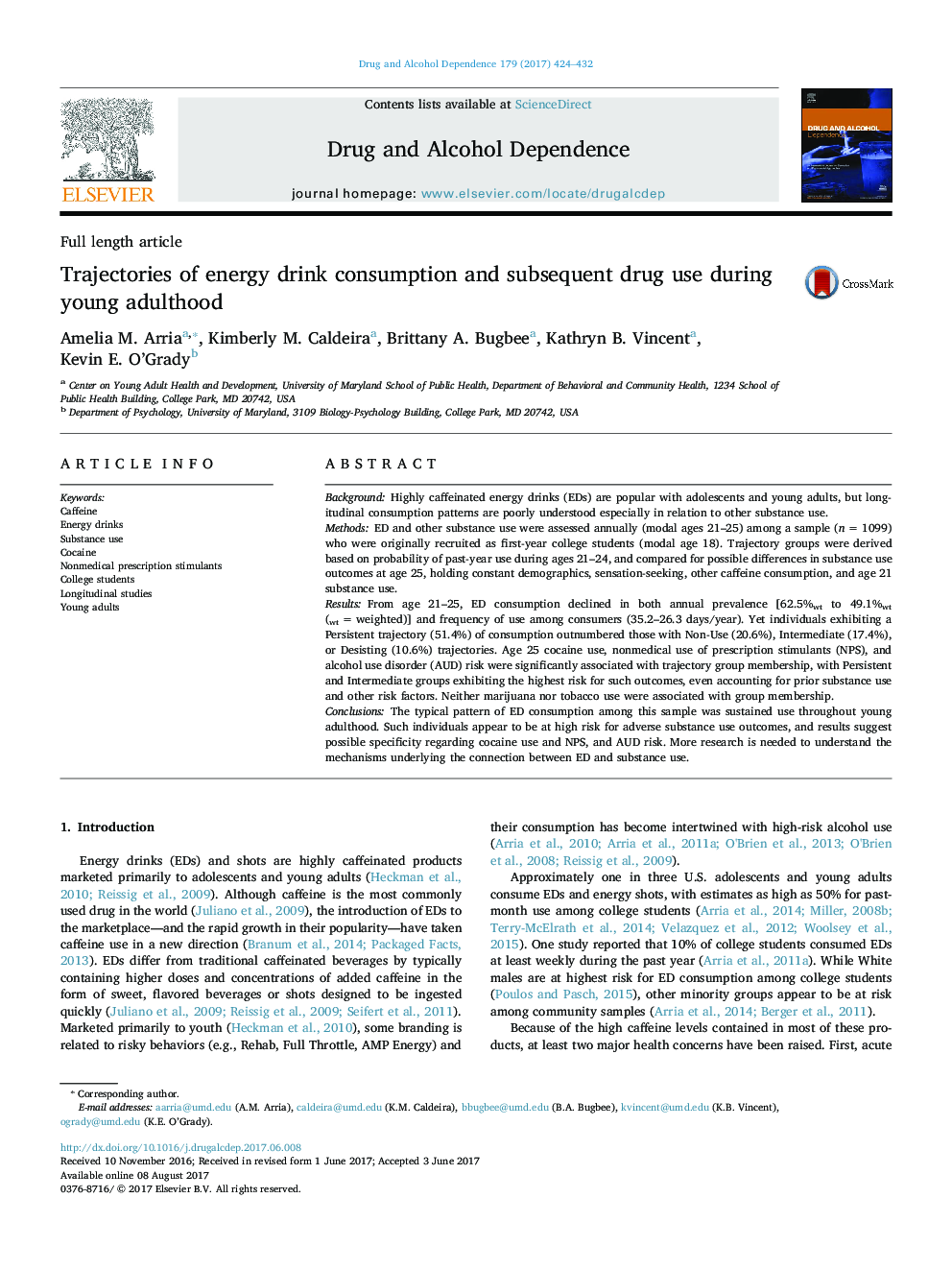| کد مقاله | کد نشریه | سال انتشار | مقاله انگلیسی | نسخه تمام متن |
|---|---|---|---|---|
| 5119972 | 1486112 | 2017 | 9 صفحه PDF | دانلود رایگان |
- Energy drink (ED) use prevalence fell significantly during ages 21-25 (63%-49%).
- Half (51%) of the sample exhibited a Persistent 4-year trajectory of ED use.
- Persistent ED use predicted increased risk for alcohol use disorder at age 25.
- Both Persistent and Intermediate ED use predicted cocaine use and nonmedical stimulant use.
- ED trajectory group membership predicted neither marijuana nor tobacco use at age 25.
BackgroundHighly caffeinated energy drinks (EDs) are popular with adolescents and young adults, but longitudinal consumption patterns are poorly understood especially in relation to other substance use.MethodsED and other substance use were assessed annually (modal ages 21-25) among a sample (n = 1099) who were originally recruited as first-year college students (modal age 18). Trajectory groups were derived based on probability of past-year use during ages 21-24, and compared for possible differences in substance use outcomes at age 25, holding constant demographics, sensation-seeking, other caffeine consumption, and age 21 substance use.ResultsFrom age 21-25, ED consumption declined in both annual prevalence [62.5%wt to 49.1%wt (wt = weighted)] and frequency of use among consumers (35.2-26.3 days/year). Yet individuals exhibiting a Persistent trajectory (51.4%) of consumption outnumbered those with Non-Use (20.6%), Intermediate (17.4%), or Desisting (10.6%) trajectories. Age 25 cocaine use, nonmedical use of prescription stimulants (NPS), and alcohol use disorder (AUD) risk were significantly associated with trajectory group membership, with Persistent and Intermediate groups exhibiting the highest risk for such outcomes, even accounting for prior substance use and other risk factors. Neither marijuana nor tobacco use were associated with group membership.ConclusionsThe typical pattern of ED consumption among this sample was sustained use throughout young adulthood. Such individuals appear to be at high risk for adverse substance use outcomes, and results suggest possible specificity regarding cocaine use and NPS, and AUD risk. More research is needed to understand the mechanisms underlying the connection between ED and substance use.
Journal: Drug and Alcohol Dependence - Volume 179, 1 October 2017, Pages 424-432
